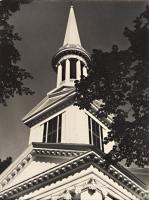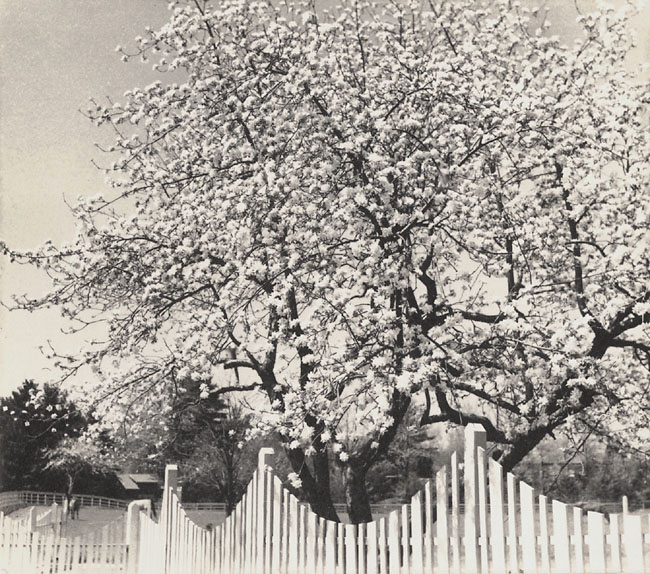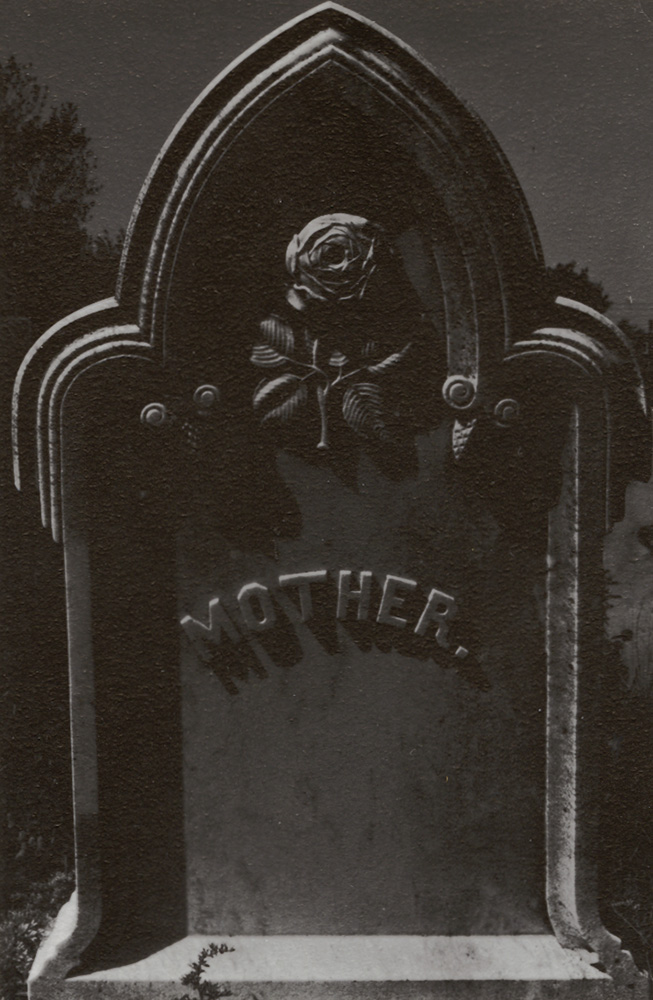About this Photographer

Church, Falmouth, Cape Cod, MA
By Alex Novak
Dorothy Norman was born in Philadelphia, PA on March 28, 1905. She was educated at Smith College, Northampton, MA and at the University of Pennsylvania. In 1925, she became a June bride and married Edward A. Norman, an heir to the Sears, Roebuck fortune. They had two children, Andrew and Nancy, but the marriage ended in divorce in 1951. After getting married, Norman began to do volunteer work for the American Civil Liberties Union.
In 1927, Norman met the photographer Alfred Stieglitz at his Intimate Gallery on Park Avenue in New York City. Shortly thereafter, the two became lovers. As her mentor, Stieglitz encouraged Norman's interest in taking photographs, and the pair often photographed each other.

Rockefeller Center, Church in Foreground, New York City, NY
Norman was a vital presence at Stieglitz's third and final gallery, An American Place, where she oversaw the gallery's operations. In fact, it was she, Georgia O'Keefe and John Marin who convinced Stieglitz to open the new gallery. She even curated the 1937 show there, "Beginnings and Landmarks: "291" 1905-1917". Norman documented activities and installations in this gallery and also made portraits of the many artists and writers who were drawn there. During this period she also photographed views of New York City and Cape Cod, many of which are exhibited here.
While taken with her own inimitable style, these little contact prints (she did virtually no large vintage prints, although some of her later printed portraits were enlarged) closely resemble similar images by Stieglitz and Strand, especially the latter's New England series. Her small vintage prints are exceedingly rare. Many images only exist in one or two such prints.
The fact that Norman's photographs resemble Strand's is not unusual at all, considering that she told William McNaught in an interview in 1979, "I'd been taken to the home of Paul Strand and seen his work. Strand's photographs were the first, first-rate photographs I'd seen… I thought they were absolutely extraordinary. I had never seen anything like them. They were so extraordinary and I was so overwhelmed by their quality that I made the stupid error of saying to him, 'What kind of a camera do you use? These are so marvelous.' He looked at me hostilely and he said, 'It is not the camera.' And I said to myself, 'Oh, the hell with it.' I felt what a stupid fool I was. But it was a strange experience and I felt uncomfortable. I found his photographs absolutely marvelous but curiously, I wasn't moved by them. But I was impressed by them in a way that I had never been impressed by anything before. And I didn't know anything about Strand except that my husband and I were taken to him. I had no idea he had been shown by Stieglitz as long ago as 1915 or thereabouts."
From the same interview Norman talked about the impact of Stieglitz's photographs on her: "When Stieglitz took out his own work, it was daylight. There were no lights focused on the prints as there had been at Strand's. Stieglitz just very simply put out his prints without saying anything. This was not terribly long after I'd seen the Strands but the situation was so different and the approach to the photographs was so direct and human and simple and there was no effort to get the best light on them or anything of the kind. What I was being shown--I didn't know the word "equivalent" for Stieglitz's cloud pictures--but I knew I'd never seen anything like the photographs I was being shown. I presumed the prints must be by Stieglitz, because of the wordless way in which he had brought them out. And I was speechless before them because there was something so tender and so unspectacular about them. I thought that I'd never seen anything like them in the world. The sensitivity of the prints--their mystery and quality deeply touched me.
It was Stieglitz who bought Norman a 3 1/4 x 4 1/4 camera. He told Norman, "You can pay me back when you can." According to Norman, "What he told me was to shut down as far as possible, take as long exposures as possible and then just go ahead and photograph, photograph, photograph. I have a number of the first photographs I took, which I would send to Stieglitz."
Oddly enough it wasn't the American Place that was to first show Norman's work, but the New York Museum of Modern Art, which included several of her pieces in the 1944 exhibition, "New Workers". It was another pioneering gallery director, Helen Gee, who showed her work next at Limelight Gallery in 1955. That show combined the two lovers' portraits and was titled "Alfred Stieglitz/Dorothy Norman, Portraits of Each Other". Norman's images were also included in the influential George Eastman House exhibit, "Photography at Mid-Century: 10th Anniversary Exhibition", which was curated by Walter Chappell. And her friend Minor White showed her work in "Light 7" at the Hayden Gallery at M.I.T in 1968.
Norman did not consider herself a professional photographer. As the website for the David Winton Bell Gallery of Brown University puts it, "She photographed the places she cherished--trees in Woods Holes, churches in Falmouth, the New York harbor and Rockefeller Center--and the interior of An American Place, Stieglitz's last gallery. She created an extended portrait study of Stieglitz, as he did of her. Norman's work is characterized by a clarity of vision, beautiful use of light and shadow (especially in the interior studies), and masterful printing techniques learned under the tutelage of Stieglitz and Edward Steichen. Her small, simple prints--private, quiet, intimate--have drawn comparison to the poems of Emily Dickinson."
As a writer, activist and photographer, Dorothy Norman championed liberal causes and artistic expression. Those interests all came together in her publication, "Twice a Year-A Semi-Annual Journal of Literature, the Arts and Civil Liberties". In this periodical, which was published between 1938 and 1948, she printed photographs alongside articles of social commentary and criticism. The first issue contained articles by Norman herself, Rainer Maria Rilke, Thoreau, Malraux, Ignazio Silone, E.E. Cumming, Kafka and Anais Nin, and photographs by Stieglitz.
After Stieglitz's death, she published several books devoted to Stieglitz--"Stieglitz Memorial Portfolio" (1947) and "Alfred Stieglitz: An American Seer" (1973). She had edited "America and Alfred Stieglitz" in 1937.
Norman spent much of her later life studying religion and philosophy, and working to improve social conditions in India.
In 1968, Norman donated an extensive collection of photographs by herself and Stieglitz to the Philadelphia Museum of Art. A selection of these was exhibited there that year. A larger number of Norman's photographs were shown at the International Center of Photography in New York City in 1993 accompanied by a book, "Intimate Visions: The Photographs of Dorothy Norman".
In 1995 Double Elephant Editions, Ltd. published "Dorothy Norman: Selected Photographs", a portfolio of 14 images.
Norman died on April 12, 1997 at her East Hampton, NY residence where she spent her last years. Her personal papers and photographic works are preserved in the Beinecke Library at Yale University, the Philadelphia Museum of Art and the Center for Creative Photography. Many other institutions also hold her work, although much of it is from the printed-later portfolios, including the David Winton Bell Gallery at Brown University, the J.Paul Getty Museum, the San Francisco Museum of Modern Art, the National Portrait Gallery, the High Museum of Art, the Boston Museum of Fine Arts, the New Orleans Museum of Art, the Hallmark Photographic Collection, the Saint Louis Art Museum, the International Center of Photography, the New York Metropolitan Museum of Art, the Amon Carter Museum, the Houston Museum of Fine Arts, the Detroit Institute of Arts and the New York Museum of Modern Art.
Norman is included in the Auer & Auer and George Eastman House databases, the "Macmillan Biographical Encyclopedia of Photographic Artists & Innovators" and the 20th Edition of the "Who's Who in American Art--1993-1994".
Much of the information in this article was derived from the Getty Museum's and the David Winton Bell Gallery at Brown University's biographies of Norman, plus the 1979 interview that she gave to William McNaught.
Dorothy Norman: Simplicity, Elegance and a Modernist Eye for Photography
Exhibited and Sold By
Vintage Works, Ltd.
258 Inverness Circle
Chalfont, Pennsylvania 18914 USA
Contact Alex Novak and Marthe Smith
Email info@vintageworks.net
Phone +1-215-518-6962
Call for an Appointment













Share This